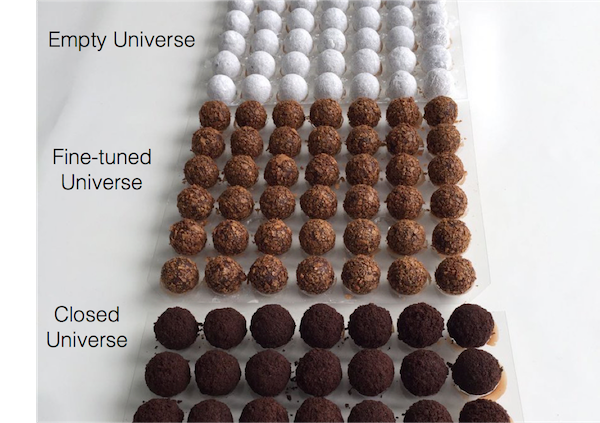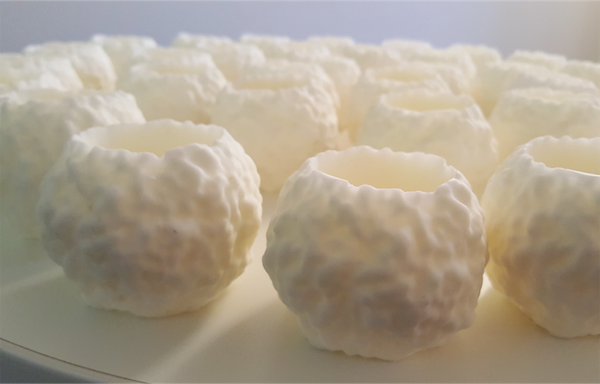This article was published in Scientific American’s former blog network and reflects the views of the author, not necessarily those of Scientific American
Astronomy is mostly experienced through sight. Looking at pretty pictures from space is great, but it’s only one of five senses. What about people who don’t have that? Can we bring astronomy to them in a different, more participatory way?
My research as an astrophysicist at Imperial College London deals with some complex and far away concepts such as dark matter, dark energy and the Big Bang. But as a science communicator and educator, for years I’ve been asking myself the question of how can we make some of the most difficult concepts in modern physics fun, engaging, and accessible to all.
In my quest to widen participation I’ve tried many different routes—some quite radical. In 2014 I wrote a short book, “The Edge of the Sky: All you need to know about the All-There-Is,” that aims at explaining everything we know about the Universe (and all that we still don’t know) using only the most common 1,000 words in English. And no, “universe” is not one of them!
On supporting science journalism
If you're enjoying this article, consider supporting our award-winning journalism by subscribing. By purchasing a subscription you are helping to ensure the future of impactful stories about the discoveries and ideas shaping our world today.
I have also been experimenting with the idea of using food as an engaging, fun metaphor for astrophysical phenomena. After all, food concerns us all, and we all have a relationship with it. I’ve used focaccia bread to explain the expansion of the Universe; brought fruits and vegetables to young kids in school and asked them to build a solar system to scale (with peppercorns for the asteroid belt!); and developed a cookery traveling show based on early Universe cosmology.

A rising focaccia demonstrates the expansion of the universe. Credit: Roberto Trotta
The project I’m currently working on tries to take these early experiments to a new level of sophistication. g-ASTRONOMY is a collaboration with experimental chefs Jozef Youssef and Stefano de Costanzo, of London-based Kitchen Theory, two trailblazing chefs devoted to multi-sensorial dining experiences. g-ASTRONOMY aims to break the assumption that astronomy and astrophysics can only be understood in terms of visual representation. Instead, we wish to create simple, elegant (and edible) metaphors for some of the universe’s most complex ideas, so as to enable people to engage with some of the most important theories in astrophysics in a new, accessible and delicious way.
Our collaboration produced an edible orrery of the solar system, with visitors of London’s Science Museum invited to create their own edible planets with a technique called “spherification”—producing liquid spheres encapsulated in a thin membrane that would burst in your mouth in an explosion of taste.
.png?w=598)
This "13.976" cocktail, named after the age of the universe in billions of years, represents the cosmic timeline from the Big Bang until now. Credit: Roberto Trotta
For the Cheltenham Science Festival 2016 we created a cocktail (named “13.796,” after the age of the Universe in billions of years) that was inspired by the cosmic timeline, from the Big Bang to today. Served in a Martini glass that signifies the expansion of the Universe, time in the cocktail flows from the bottom up. The cocktail is composed of three layers of decreasing density that do not mix with each other. Each layer relates to a cosmic epoch: the early Universe plasma at the bottom (mango smoked with wooden chips of whisky barrels), the dark ages when the Universe became transparent (gellified coconut Malibu) and the formation of the first galaxies (coconut water with suspension of vanilla pods). A scientifically accurate, utterly delicious (and slightly inebriating) representation!
.png?w=600)
A parmesan tulle shows the distribution of galaxies in the universe. Credit: Roberto Trotta
We also encapsulated the distribution of galaxies in the sky and Einstein’s notion of a malleable spacetime continuum in a parmesan tuile, and explored with it the meaning of “cold” vs. “hot” dark matter.
The speculative notion of a Multiverse with different pocket Universes, each with its own laws of physics and different constants of nature, was translated into three chocolate pralines. Their contents, texture, and density where carefully chosen to embody an empty Universe, an over-dense Universe, and our own, finely-balanced Universe, with its 25 percent dark matter (chocolate crumble), 70 percent dark energy (coffee milk chocolate ganache) and 5 percent of all-important normal matter (passion fruit gelatin).

Three kinds of universe, expressed as chocolate pralines. Credit: Roberto Trotta
We now embarked on an even more challenging project: in collaboration with the Royal National Institute of Blind People, we designed an event exclusively for people with sight loss, which we ran for the first time in London in March 2017.
The workshop has been specially redesigned to provide an immersive and interactive experience without the need for visual clues. Visitors were thus able to simultaneously feel and taste the evolution of our universe from the Big Bang to the formation of galaxies, and experience the Multiverse theory through how different universes might taste, rather than how they look. The cocktail was broken down in three different sections, with the first one served in specially designed, 3D-printed cup holders reproducing in a tactile form the “bumps” in energy found in the baby Universe, based on data on the cosmic relic radiation collected by the microwave satellite Planck (based on work by my colleague David Clements at Imperial).

3-D-printed cup holders are emblazoned with the pattern of "bumps" that characterize the density structure of the very early universe. Credit: Roberto Trotta
The g-ASTRONOMY project is about using all of our senses to better communicate complex ideas in astronomy and astrophysics. It’s been an absolute privilege to be able to work with people with sight loss to better understand how to take the concept forward. Their insights and feedback will shape the next phase of g-ASTRONOMY: moving away from edible tableaux of astronomical ideas, and exploring deeper analogies in terms of the physics at work both in the Universe and in the kitchen.
The feedback from participants with visual impairment has been very humbling, and encouraging: “I’ve never experienced anything like it before”; “I cannot stop thinking about it!”; “Life changing.”
This will be enormously helpful to me and my collaborators as we continue in our quest to put the biggest questions in physics on the tip of your tongue.
g-ASTRONOMY is supported by the Institute of Physics, the Royal Astronomical Society and the Science and Technology Facilities Council.
Thanks to:
Dr. David Clements, Ingrid Logan, Sam McKenney, Jing Sheng Pang, Imperial College London Advanced Hackspace
Joy Aston, Abigail Sawyer, Aran Shaunak, Allison Tau, Chun Yin San Imperial College Science Communication Unit